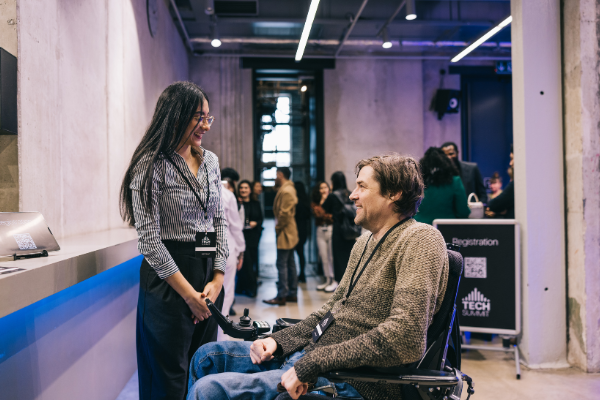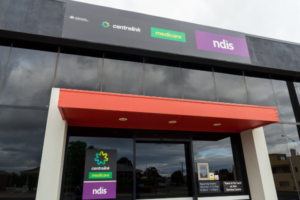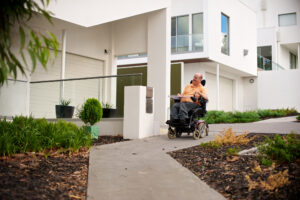Changes to NDIS Registration Are Coming
The Australian Government set up the NDIS Provider and Worker Registration Taskforce to improve how NDIS registration works. This follows the recent NDIS Review, which said the current system isn’t working well and needs to change.
The Taskforce’s job was to give expert advice on designing a new, fairer NDIS registration system. The goal is to make sure people with disability are safe and get high-quality support, while still having choice and control over how they use their NDIS funding.
Key Advice from the Provider and Worker Taskforce
Why Do We Need a New NDIS Registration System?
We need a new NDIS registration system because the current one doesn’t work well.
Right now, it treats all providers the same, even though some services are more risky than others. This makes it harder to keep people safe and can be unfair to smaller or low-risk providers. It’s also hard to see who is giving support, which makes it tricky to check quality and stop bad practice.
A new system would be simpler and fairer. It would focus on the level of risk, give people with disability more choice and control, and help make sure everyone gets safe, good-quality support.
What People Said About NDIS Registration
In 2024, the Taskforce met with over 2,200 people to gather their thoughts on NDIS registration. The Taskforce met with people in more than thirty roundtables and webinars, had over 150 small meetings, went on two regional trips, received over 700 written submissions, and worked with five expert groups that included people with disability, NDIS experts, and worker representatives.
The main feedback was clear: the current NDIS registration system is not working well. People want a new system that is:
-
Fair – based on the level of risk and type of support being provided
-
Transparent – it should be easy to see who is providing services
-
Supportive of choice and control – participants must still be able to choose who supports them
-
Flexible – the system must support innovation and smaller providers
-
Respectful of workers – workers should be safe, supported and involved in the process
Many people worry that mandatory registration for all NDIS providers could make it harder for participants to get the support they need—especially in rural areas or from smaller providers.

Two women provide feedback on the NDIS.
The definition of an NDIS provider is too broad
At the moment, anyone who receives NDIS funding (except participants themselves) is considered an NDIS provider. The Taskforce thinks this definition is too broad and should be narrowed. While the new definition still needs to be co-designed with the disability community, the Taskforce believes the following services should definitely be covered by NDIS registration:
-
Housing or home and living support
-
Help to live independently, including shared supports
-
Day programs in centre-based settings
-
Employment support and job-readiness training
-
Australian Disability Enterprises (ADEs)
-
Short-term accommodation or respite care
-
In-home care (e.g. hygiene, mobility, social support)
-
Community access and social participation
-
Plan management and financial support services
-
Assistive technology and home modifications
-
Disability-specific transport
-
Allied health and therapy services
-
Early childhood and early intervention services
-
Positive behaviour support
-
Interpreter services
-
Health services like paediatrics and optometry
-
Capacity building
-
Peer support programs
-
Orientation and mobility services
These services have a direct impact on people’s daily lives, so the NDIS registration model should cover them.

Taskforce recommends that no NDIS registration is required for goods bought from shops like chemists.
Key Recommendations for NDIS Registration
The Taskforce made 11 key recommendations and 10 actions for the government to improve NDIS registration. You can read the full list of recommendations on the Department of Social Service’s website. Here are the most important ones:
1. Use a Graduated NDIS Registration System
Instead of treating all providers the same, the Taskforce suggests different types of NDIS registration depending on the risk of the service:
-
Advanced Registration – for providers of high-risk supports, like daily care in group homes
-
General Registration – for services that need special training, like injections or bowel care
-
Self-Directed Support Registration – for participants (or their nominees) who manage their own services
-
Basic Registration – for low-risk supports like community activities with limited one-on-one contact
-
No Registration Required – for goods bought from shops like chemists or hardware stores (proof of purchase is enough)
2. Platform Providers Must Be Registered
All platforms that help people find support workers or services must be covered by NDIS registration—no matter if they operate online, in person, or through a mix of both.
3. Register High-Risk Providers Immediately
Any provider offering Supported Independent Living (SIL) or Home and Living supports should register straight away. These services have a higher risk of abuse and neglect.
4. Workers Engaged by Self-Directed Participants
Workers themselves would not need to be registered if they were engaged by participants who are registered under the Self-Directed Support Registration category. Instead, the participant (or their nominee) who is self-directing their support would be registered with the NDIS Commission. More on this registration type below.
5. Help Self-Directed Participants Register
People who manage their own support services will be able to register under the Self-Directed Support Registration category. Their services would still be checked and audited to keep participants safe.
Lifely’s Thoughts on NDIS Registration
Lifely strongly supports NDIS registration for all providers. A graduated model is a smart way to make sure different types of services are treated fairly. It also works well for shops like department stores or chemists that sell NDIS-funded items.
However, Lifely and many other trusted providers are worried about one big gap. If workers hired by self-directed participants don’t need to register, it could open a loophole. This could lead to fraud or abuse, putting participants at risk.
NDIS registration should not leave space for unsafe or dishonest people to take advantage of the system.
Read our blog on why using an NDIS-registered provider is the safer option.
Final Thoughts
The Taskforce’s advice gives us the chance to make NDIS registration smarter, safer and more flexible. It supports real choice and control for NDIS participants, while also protecting them from harm.
The next step is for the government to work with people with disability, families, and providers to co-design the final NDIS registration system.



